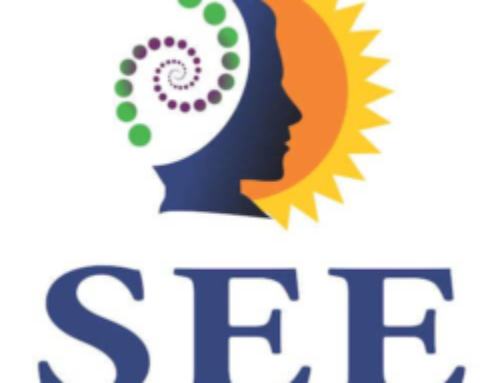We often deal with clients or teams who are stressed and have often not realized the impact the stress has on the mind and body. Many individuals are not able to relate to their emotions or just go on with life very mechanically or are looking for a spark or external triggers to keep them happy. The article articulates what is stress and how chronic stress has a significant impact on our mind and body.
What is Stress?
Stress is our “response” to any kind of demanding situation. This situation can be (1) real danger (facing a lion) or (2) an emotionally negative reaction (e.g. anger or recalling past trauma) or (3) an imaginary situation (e.g. a terrible dream). During human evolution, our body and mind has developed an automatic response through our ANS (Autonomous Nervous System) to allow us to respond to stress. This response is driven by our primitive brain.
What happens when we are stressed?

Activation of HPA, which activates SNS, causes the adrenal glands to release epinephrine and norepinephrine, which increase pulse, blood pressure, and affect other physiological responses. The secretion of these hormones leads to a variety of metabolic changes all over the body. The blood supply to gastrointestinal tract, hands and feet is reduced, while the vessels to the heart, large muscles and brain dilate to help us prepare for the demanding situation! Pupils dilate so we can see what’s happening and metabolism is increased to give the body more energy (specifically, the glucose is released in the blood stream!). Breathing (rate) increases allowing more oxygen and the muscles become tense to allow us to face the demanding situation. The acid in the stomach increases and due to reduced focus on digestion the enzymes decreases often resulting in diarrhea or constipation. The cortisol also suppresses the immune system and the reproduction system is also de-activated.
These changes allow us to face the demanding situation (either by fighting it or by running away from it i.e. fight or flight response). The changes are necessary since without these changes we are not able to face the demanding.
The demanding situation which triggers the stress response can be a real danger (the lion in front of you), or an emotionally painful situation (i.e. no physical danger that requires you to fight or flight) or an imaginary situation (e.g. a terrible dream). All of these situation results in fight or flight response that triggers the stress hormones and makes all the changes in the body to prepare us for the demanding situation. In other words, the stress (even if it is imaginary or not from a real danger) still causes these changes (and hormones) in the body. However, the humans evolved to this fight or flight mode only to face a “real” danger that requires us to fight or run away (flight). Now, when we create similar changes from an imaginary (e.g. emotionally challenging) situation, the body still reacts the same way but the changes happening in the body are not needed since we do NOT need to “fight” or “flight”.
As a result, when an imaginary (or emotional) situation keeps triggering the stress response over the years, the physiological changes in the body do more harm to the mind-body system which manifests as disease.
Long term implication of Stress:
This is the implication for you to understand. When the body is consistently stressed (i.e. continuous trigger of fight or flight mode), it can NOT repair itself. The repair can only be done when the body is in a state of physiological relaxation (ever wondered how to repair Mahim Causeway or Manhattan 6-lane road during busy traffic?).
Repetitive trigger of stress response damages the organs and body can’t fix them. The chronic stress ends up damaging our body and we become unwell. (Imagine if you have a tendency of diabetes and you remain in stress response. The glucose will be released in the blood stream – supposedly to fight or run away from a real danger such as lion in front of you. However, when we trigger stress response through emotional negativity or similar factors (e.g. anger), that blood glucose does not get consumed sine there is no need to run or use up that glucose.
What happens when the stress is gone?
The body knows how to relax. When the stress is gone and we are back to normal situation (and hopefully feeling positive), the PNS becomes dominant and the hypothalamus stops triggering the stress responses. When SNS dominance reduces, the Cortisol and adrenaline drop. When this happens the mind-body system becomes stable (e.g. blood supply becomes more balanced and digestion begins, the heart beats become normal, the breathing rate reduces and so on).
From other perspective, humans mind and body maintain a complex dynamic equilibrium, or homeostasis, which is constantly challenged by internal or external demanding situation, termed stressors. Thus, stress is defined as a state in which homeostasis is actually threatened or perceived to be so; homeostasis is re-established by a complex repertoire of behavioral and physiological adaptive responses of the organism. Stress and homeostasis are at odds with one another within us.
In nutshell, when the stress is managed effectively, body returns to its equilibrium (homeostasis) and that’s where repair and healing begins !
What can I do for Stress Management?
At Wellness Space, we transform individuals and teams via multi-pronged approach (read more about the integrated mind-body approach of Panch Kosha). One of the elements we address is stress management and how to achieve homeostasis. This is accomplished via several methods which are usually customized for an individuals or a team.
The solutions for individuals include 1:1 therapy (Regression Therapy e.g. Inner Child or Past Life Regression, Sound Healing, Hypnotherapy, NLP, Counseling, Yoga Therapy…just to name a few). The solution for the teams include “Stress management workshop with Cyclic Meditation” (also for individuals), workshops on various aspects of wellness, counseling on work-life balance, team effectiveness training and so on). Individual therapy helps in eliminating the root cause (a traumatic event from the past that may be impacting the normal life of the individual) and eliminates any major emotional baggage that often weighs down on the individual. We also recommend practices for ongoing management of stress and firmly believe that our nutrition must not be limited to physical body but must all five layers of existing (read more about this in Pancha Kosha and nutrition).
Meditation plays a big role in reducing stress (though for some cases such as depression, passive meditation does not help). You can visit Wellness Space for Free Meditation on Full Moon and New Moon days (Free meditation @ Wellness Space) from 7pm to 8pm.
Gunjan Trivedi
Life Coach
[email protected] or call 9574742288.







Leave A Comment